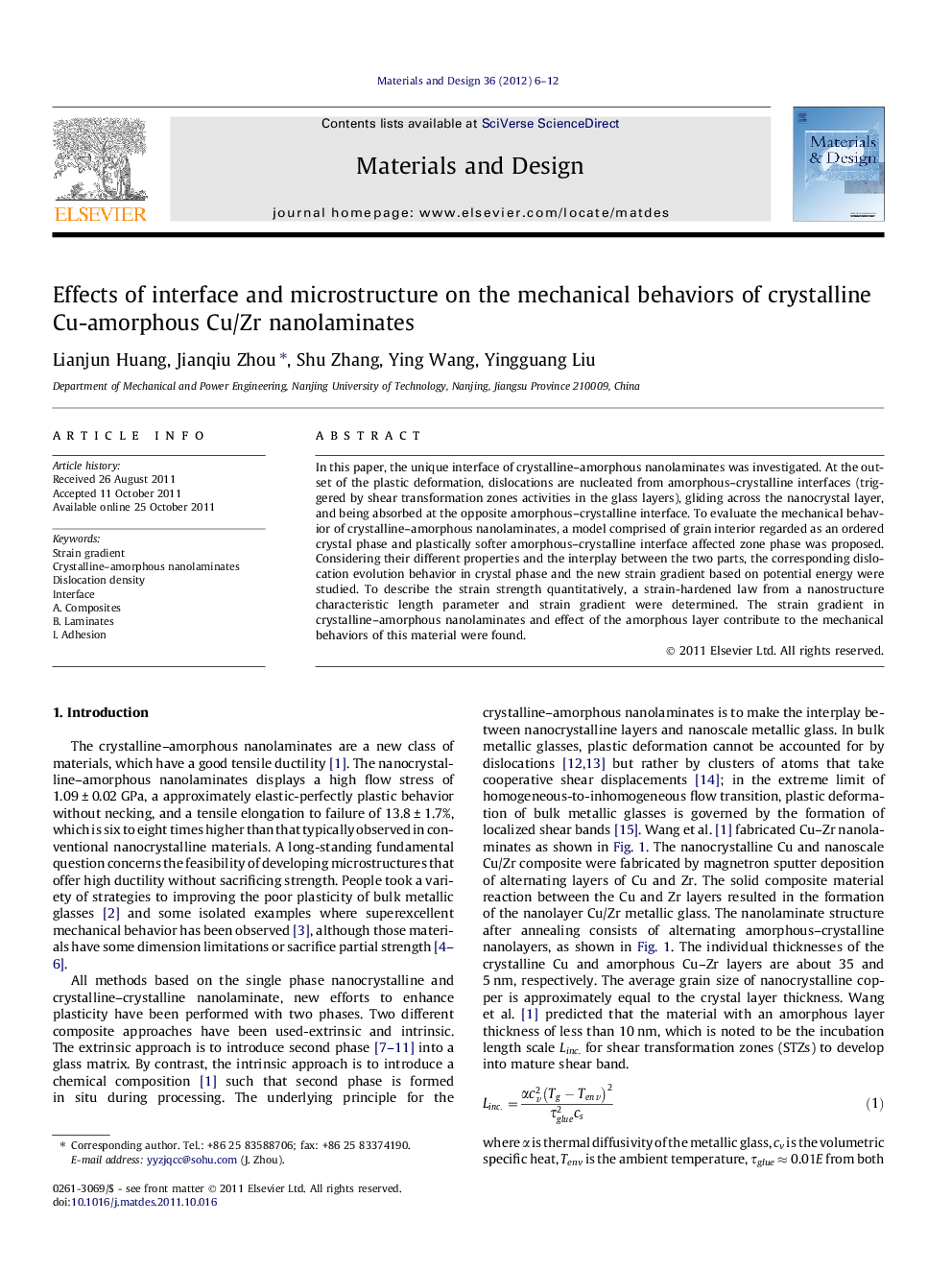| Article ID | Journal | Published Year | Pages | File Type |
|---|---|---|---|---|
| 830806 | Materials & Design (1980-2015) | 2012 | 7 Pages |
In this paper, the unique interface of crystalline–amorphous nanolaminates was investigated. At the outset of the plastic deformation, dislocations are nucleated from amorphous–crystalline interfaces (triggered by shear transformation zones activities in the glass layers), gliding across the nanocrystal layer, and being absorbed at the opposite amorphous–crystalline interface. To evaluate the mechanical behavior of crystalline–amorphous nanolaminates, a model comprised of grain interior regarded as an ordered crystal phase and plastically softer amorphous–crystalline interface affected zone phase was proposed. Considering their different properties and the interplay between the two parts, the corresponding dislocation evolution behavior in crystal phase and the new strain gradient based on potential energy were studied. To describe the strain strength quantitatively, a strain-hardened law from a nanostructure characteristic length parameter and strain gradient were determined. The strain gradient in crystalline–amorphous nanolaminates and effect of the amorphous layer contribute to the mechanical behaviors of this material were found.
► The unique interface of crystalline–amorphous nanolaminates was investigated. ► The new strain gradient based on potential energy were developed. ► The amorphous layer contributes to the mechanical behaviors of this material.
